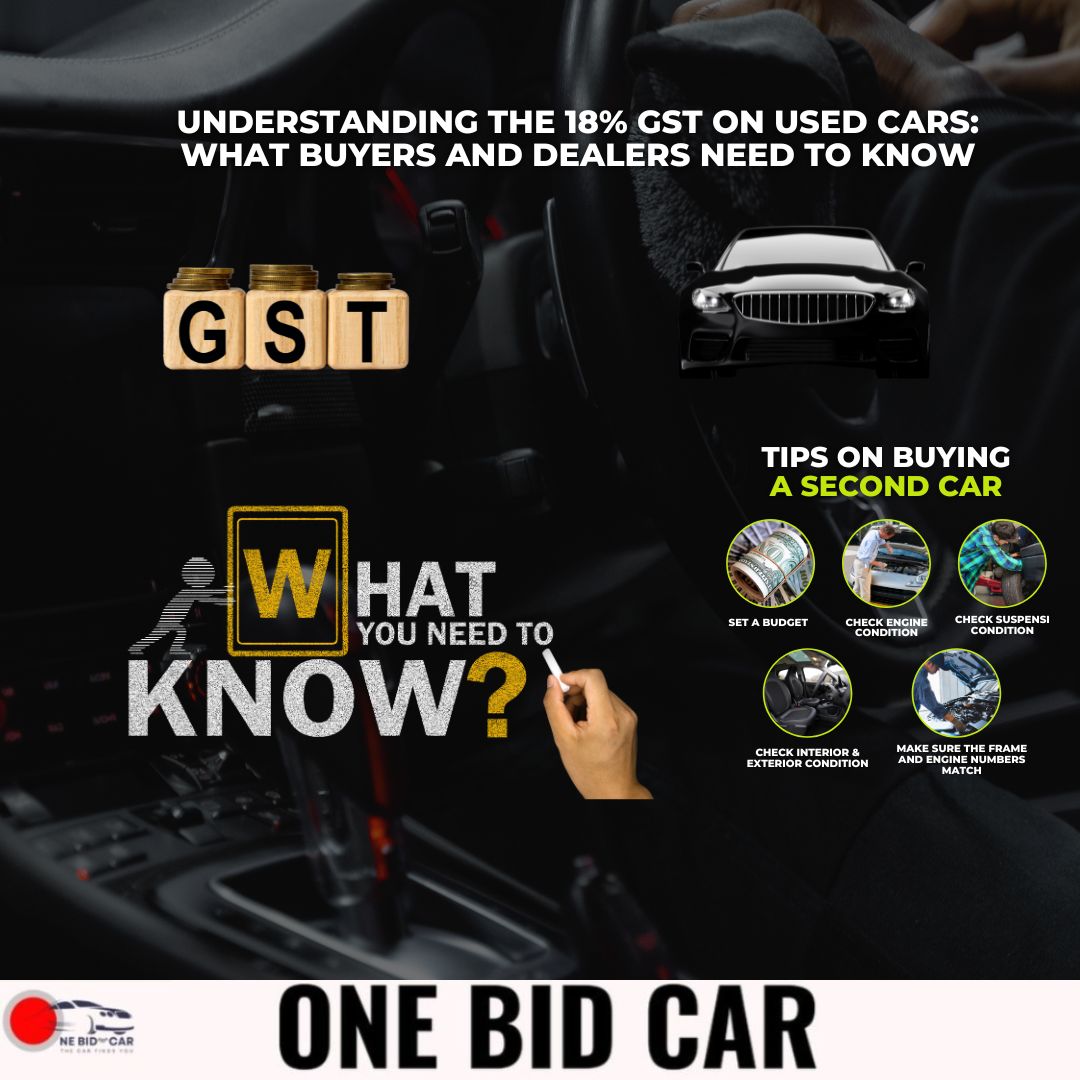
The Goods and Services Tax (GST) Council recently introduced an 18% GST rate on the margin value of used car sales, specifically targeting certain vehicle categories. This revision has stirred discussions among car buyers, sellers, and dealers. If you're buying or selling used cars, here's everything you need to know.
What is the 18% GST on Used Cars?
This revised tax applies to the margin value of used car sales for the following vehicle categories:
- Petrol Vehicles: Cars with engine capacities of 1200 cc or more.
- Diesel Vehicles: Cars with engine capacities of 1500 cc or more.
- Electric Vehicles (EVs): All categories of EVs.
The margin value is the difference between the car’s purchase price and selling price, including depreciation, if applicable. Dealers are now required to pay 18% GST on this margin value.
Who Does It Affect?
- Dealers and Businesses: The 18% GST applies to dealers or businesses involved in buying and selling used cars. However, these dealers can leverage the margin scheme, where GST is only charged on their profit margin and not the full sale price. This scheme ensures that if a car is sold at a loss, no GST is payable.
- Individual Sellers: Transactions between individuals remain unaffected. For instance, if an individual sells their car to another individual or a dealer, no GST is applicable unless the seller is GST-registered. In such cases, a 12% GST rate might apply.
Key Features of the Margin Scheme
- Profit-Based Taxation: GST is charged only on the profit margin (selling price – purchase price) and not the total sale value.
- No GST on Losses: If the selling price is lower than the purchase price, no GST is payable.
- Depreciation Benefits: Dealers can calculate depreciation using the Written Down Value (WDV) method under the Income Tax Act, 1961. For example, if a vehicle is purchased for ₹10 lakh, its value may depreciate to ₹9 lakh in the next year, reducing the taxable margin.
Implications for Buyers
For buyers, the new GST rule might lead to a marginal increase in prices for used cars purchased from dealerships. However, buying from individual sellers remains unaffected, providing an alternative for cost-conscious buyers.
Scenarios Under the New GST Rule
- Sale at a Profit:
- Purchase Price: ₹10,00,000
- Selling Price: ₹11,00,000
- Margin: ₹1,00,000
- GST (18%): ₹18,000
- Sale at a Loss:
- Purchase Price: ₹10,00,000
- Selling Price: ₹9,00,000
- Margin: ₹1,00,000 (negative)
- GST: Not applicable
Conclusion
The revised GST rules aim to streamline the taxation process for used car sales while ensuring that dealers only pay tax on their profit margins. For businesses, understanding and leveraging the margin scheme can significantly reduce their tax burden. On the other hand, individual buyers and sellers continue to benefit from minimal tax implications, preserving the affordability of used car transactions.
As the used car market evolves, platforms like OneBidCar are here to simplify your buying and selling experience. Whether you're a dealer or an individual, our user-friendly platform ensures smooth transactions, complete transparency, and the best deals. Stay informed, and drive your dream car today with OneBidCar!
